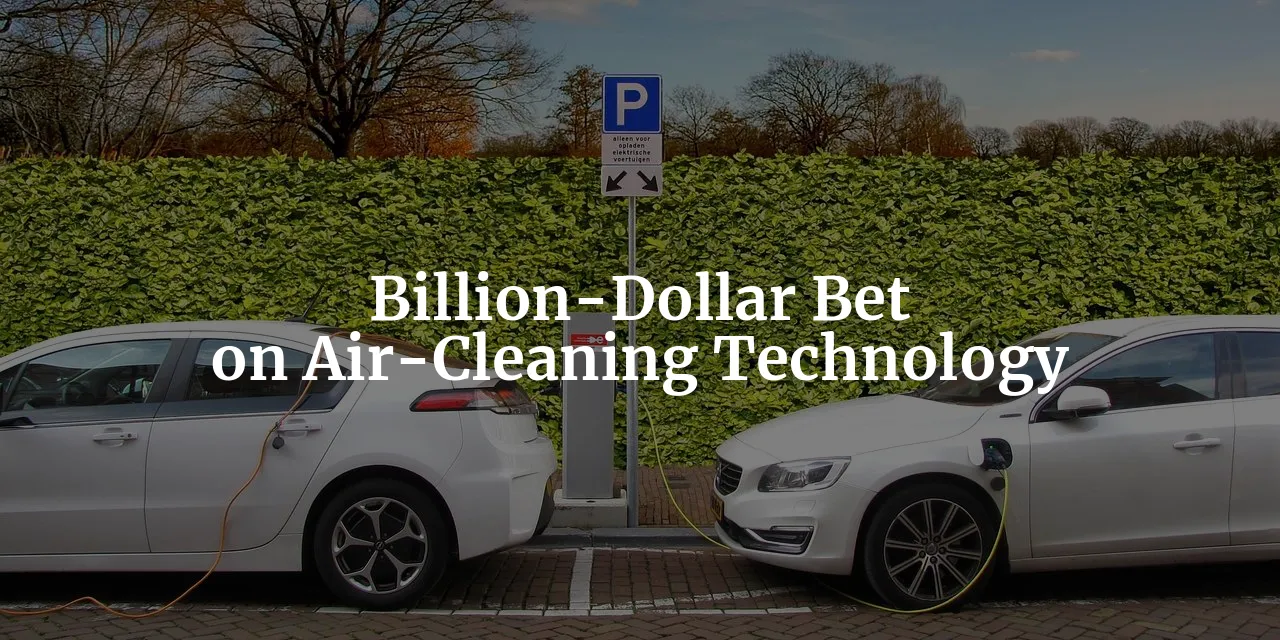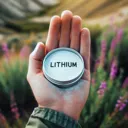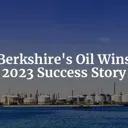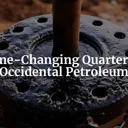Tags: Oxy / ESG / Innovation
This fanpage is not officially affiliated with Berkshire Hathaway: Disclaimer
Are you ready to embark on a journey into the future of clean energy and environmental stewardship? Join us as we explore Occidental Petroleum's billion-dollar investment in air-cleaning technology. Discover how this bold move is not just a financial transaction, but a strategic step towards a greener, more sustainable world. Learn about the revolutionary DAC technology, the potential for financial growth, and the global impact of this historic acquisition. Don't miss out on this opportunity to be at the forefront of the energy industry's transformation and the fight against climate change.

Introduction
Imagine a world where the very air we breathe becomes a canvas for innovation, a medium through which we reverse the tides of climate change. In an era where clean air is as precious as gold, Occidental Petroleum's ↗ strategic acquisition of Carbon Engineering Ltd. for approximately $1.1 billion heralds a new chapter in the fight against global warming 1. This bold move is not just a business transaction; it is a statement of intent, a commitment to pioneering solutions that address the urgent need for carbon reduction.
The industrial revolutions of the past have propelled humanity forward but at a significant environmental cost. The skies darkened and the air thickened as factories belched out smoke, and cars lined the streets. Now, we stand at the precipice of a new revolution, one that seeks to undo the damage wrought by centuries of industrialization. In this article, Berkshire Hathaway shareholders will embark on a journey through the intricacies of direct air capture (DAC) technology, the financial rationale behind Occidental's investment, and the potential for a greener future ↗.
The Players in the Game of Air
Occidental Petroleum has long been a titan in the energy sector, but it is now evolving into a vanguard for environmental stewardship. This transformation is emblematic of a broader shift within the energy industry, where traditional players are seeking sustainable paths forward.
Enter Carbon Engineering Ltd., a beacon of innovation founded in 2009 with a singular focus: to develop DAC technology capable of extracting carbon dioxide straight from the atmosphere 2. Under the leadership of CEO Daniel Friedmann, and backed by visionaries like Bill Gates, Carbon Engineering has emerged as a frontrunner in the race to decarbonize our planet.
Key Figures:
- Daniel Friedmann: CEO of Carbon Engineering, steering the company toward a cleaner future.
- Bill Gates: Renowned investor and advocate for climate solutions, providing both financial and ideological support.
- Vicki Hollub: Mineral engineer, president and CEO of Occidental Petroleum since April 2016.
The Mechanics of Snatching Carbon from the Sky
To understand DAC technology, envision a colossal vacuum cleaner designed not for dust, but for CO2. Carbon Engineering's system captures atmospheric carbon and either stores it underground or converts it into carbon-neutral fuels 24. This process is akin to planting a forest of artificial trees, each tirelessly working to cleanse the air we breathe.
The integration of DAC with geologic storage offers a promise of permanence; the carbon captured can be safely sequestered underground for millennia 3. It's a modern-day alchemy, turning the leaden threat of CO2 into the gold of a stable climate.
DAC Technology Explained:
- Capture: CO2 is extracted from the atmosphere using chemical processes.
- Conversion/Storage: The captured CO2 is either converted into carbon-neutral fuels or stored deep underground.
Here's a video by Carbon Engineering explaining the process nicely:
A state-of-the-art DAC facility will be commenced by Occidental and ADNOC in the United Arab Emirates 6, here are the main facts:
- Occidental's subsidiary 1PointFive and ADNOC signed an agreement to conduct a preliminary engineering study for a 1 million tonne-per-year Direct Air Capture (DAC) facility in the United Arab Emirates.
- The study will assess the feasibility of building the first megaton-scale DAC facility outside the United States, using the same carbon dioxide (CO2) extraction technology as the plant 1PointFive is constructing in Texas.
- 1PointFive is marketing carbon dioxide removal (CDR) credits to assist industries and companies achieve their net-zero targets.
- If approved, CO2 extracted at the DAC facility will be connected to ADNOC’s CO2 infrastructure in Abu Dhabi for injection and permanent storage into saline reservoirs not used for oil and gas production.
- The agreement was enabled by the UAE-U.S. Partnership for Accelerating Clean Energy (PACE), which is expected to mobilize $100 billion in clean energy and carbon management projects by 2035.
- ADNOC is a leading diversified energy and petrochemicals group wholly owned by the Emirate of Abu Dhabi, aiming to maximize the value of the Emirate’s vast hydrocarbon reserves through responsible and sustainable exploration and production.
The Financial Clouds Clearing Up
The $1.1 billion acquisition of Carbon Engineering is not mere pocket change, even for a behemoth like Occidental. This investment is a calculated risk, with the potential for substantial returns as the world gravitates towards carbon neutrality 1. The deal is expected to close by the end of 2023, with Canadian court reviews and regulatory approvals pending.
Financial Breakdown:
- Acquisition Cost: $1.1 billion
- Closure Timeline: Expected before the end of 2023
- Regulatory Approvals: Subject to Canadian court reviews
For Berkshire Hathaway shareholders, this move signifies more than just a diversification of assets; it represents an investment in the future of energy and the environment. Berkshire owns approximately 25% of Occidental.
Fossil Fuels' Redemption Arc
The investment in DAC technology by an oil company like Occidental might seem paradoxical, yet it is a testament to the industry's recognition of its role in the climate crisis. Occidental's integrated net-zero strategy is not just about offsetting its carbon footprint; it's about leading a movement towards a more sustainable future 1.
Historically, shifts in energy sources have been pivotal moments in human development. The transition from wood to coal, and from coal to oil, each marked a new age of progress. Occidental's foray into DAC technology could very well signal the dawn of a new era, where clean air is the currency of power.
The World's Largest Vacuum Cleaner: Stratos and Beyond
The Stratos plant, spearheaded by 1PointFive, is set to become the world's largest DAC facility, capable of removing up to 500,000 metric tons of CO2 annually 5. This monumental endeavor is not occurring in isolation. Across the globe, other initiatives are taking shape, each with its own scale and ambition.
Global DAC Initiatives:
- Climeworks' Orca Plant: Captures 4,000 tonnes of CO2 annually in Iceland.
- Aspira DAC: Developing solar-powered modules in Australia.
- 1PointFive's Stratos Plant: Aiming for 500,000 metric tons of CO2 annually in Texas.
Through these efforts, we are witnessing the construction of what could be likened to the Great Wall of China for the climate crisis—a barrier against the relentless march of carbon emissions.
The Energy Paradox and the Critics' Corner
Despite the promise of DAC technology, it is not without its detractors ↗. Critics point to the high energy demands of the process, almost equivalent to the energy contained in the fossil fuels responsible for the emissions 7. The current energy requirements for DAC underscore the need for continued innovation and efficiency improvements.
Energy Requirements:
- DAC Energy Demand: Capturing the world's CO2 emissions would require 448EJ, nearly the same as the energy from fossil fuels used globally.
The debate is a healthy one, as it pushes the boundaries of what is technologically possible and economically feasible. It is a reminder that while optimism is necessary, it must be tempered with pragmatism.
The Road Ahead: Pioneering the Air-to-Fuels Frontier
Carbon Engineering's AIR TO FUELS™ process offers a glimpse into the future of transportation, where low-carbon intensity fuels could power our vehicles with minimal environmental impact 4. The support of governments, such as through the Inflation Reduction Act, is crucial in nurturing these emerging technologies 8.
The Future of Renewable Fuels:
- Integration: Compatible with existing infrastructure and engines.
- Scalability: Potential to meet the growing demand for low-carbon energy sources.
As we look towards the horizon, the transportation sector could be poised for a transformation as significant as the switch from horse-drawn carriages to automobiles.
Conclusion: A Breath of Fresh Air for Berkshire Hathaway Shareholders
The acquisition of Carbon Engineering by Occidental is more than a financial transaction; it is a strategic move with far-reaching implications for the environment and the energy industry. It aligns with Berkshire Hathaway's investment philosophy, which values long-term growth and sustainability.
This historic step forward underscores the importance of innovation and corporate responsibility in addressing global challenges. It offers Berkshire Hathaway shareholders a vision of a cleaner future, both environmentally and financially ↗. As Occidental leads the charge into this new frontier of carbon capture and clean energy, we can all look forward to taking a deep breath of fresh air, knowing that our planet is on a path to recovery.
References
-
Occidental Enters into Agreement to Acquire Direct Air Capture Technology Innovator Carbon Engineering - www.oxy.com ↩↩↩
-
Carbon Engineering - Wikipedia - en.wikipedia.org ↩↩
-
Direct Air Capture and Storage of CO2 | Carbon Engineering - carbonengineering.com ↩
-
AIR TO FUELS™ Technology | Carbon Engineering - carbonengineering.com ↩↩
-
1PointFive and TD Announce One of the Finance Industry's Largest Purchases of Direct Air Capture Carbon Removal Credits - Carbon Engineering - carbonengineering.com ↩
-
Occidental and ADNOC to commence preliminary engineering study of a Direct Air Capture facility in the UAE - Carbon Engineering - carbonengineering.com ↩
-
'The amount of energy required by direct air carbon capture proves it is an exercise in futility' - www.rechargenews.com ↩
-
Another weapon to fight climate change? Put carbon back where we found it - www.nationalgeographic.com ↩











